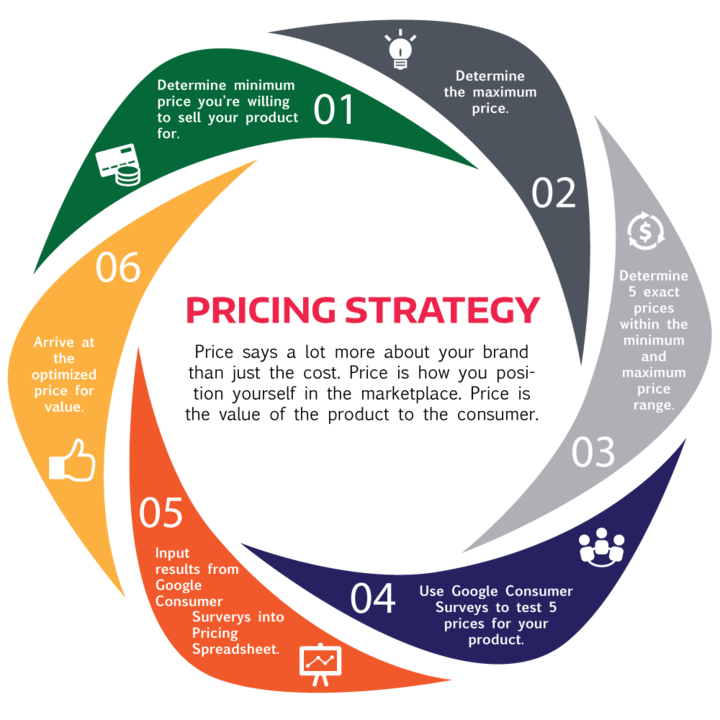Optimize Income With Proven Pricing Approach Methods
In today's affordable marketplace, the capacity to optimize earnings via reliable pricing approaches is crucial for continual company success. Strategies such as value-based rates, dynamic rates, and complete market evaluation can dramatically boost a company's economic performance. Recognizing consumer understanding and leveraging information analytics for dexterous prices adjustments are crucial parts of this technique. Nevertheless, the details of properly executing these methods can position challenges that need mindful consideration. Checking out these methods further reveals not only their possible benefits yet additionally important understandings that could improve your pricing technique.
Comprehending Consumer Perception
Comprehending consumer understanding is essential for establishing reliable rates approaches. It influences exactly how consumers examine an item's worth, quality, and total beauty. Companies need to identify that clients frequently base their determination to pay not entirely on the item's innate qualities yet also on emotional variables, including brand name online reputation, social condition, and perceived scarcity.

Furthermore, business ought to consider the function of rates psychology, such as appeal prices or cost anchoring, which can significantly influence client behavior. Comprehending these perceptions allows organizations to frame their rates strategies in a manner that lines up with customer assumptions while making best use of earnings.
Including customer understanding into pricing methods not only aids in establishing competitive rates however additionally cultivates brand name commitment, as consumers really feel understood and valued. Eventually, a nuanced understanding of client perception can result in sustainable earnings development and enhanced market positioning.
Analyzing Market Trends
To establish an effective rates approach, assessing market trends is essential for services seeking to stay competitive. Understanding the characteristics of market fluctuations makes it possible for business to make informed choices concerning prices changes, item launches, and source allocation - Pricing Strategy. By keeping track of consumer behavior, financial indicators, and market developments, services can determine patterns that inform their rates frameworks
Trick parts to consider when examining market fads include demand flexibility, seasonal fluctuations, and arising modern technologies. Demand flexibility assists services assess how rate adjustments might impact customer getting choices. Seasonal patterns can supply understandings into optimum prices during optimal and off-peak durations, enabling calculated discounting or marketing rates. Additionally, maintaining an eye on technical developments can help determine prospective hazards or opportunities that could impact pricing approaches.
Making use of information analytics tools can boost the accuracy of pattern analysis, giving useful insights that promote dexterous decision-making. Business should also consider carrying out routine marketing research to verify assumptions and adjust to advancing consumer preferences. By leveraging these insights, services can not just maximize their prices techniques but likewise reinforce their total market position, making certain lasting productivity and growth.
Competitive Rates Techniques
A competitive pricing technique is essential for businesses aiming to get a side in a congested market. By examining competitors' rates structures and market positioning, companies can tactically establish their rates to bring in clients while preserving profitability. This approach needs an extensive understanding of both the affordable landscape and client assumptions of worth.
One effective method is cost matching, where a business uses to defeat a competitor or match's price. This method can boost consumer loyalty and urge sales, particularly in price-sensitive markets. Furthermore, penetration prices can be utilized to capture market share by at first setting costs less than competitors, luring customers to try the product and promoting brand awareness.
Moreover, services can execute mental rates strategies, such as rates items just listed below a round number (e.g., $9.99 rather of $10 - Pricing Strategy.00) This can create the assumption of a far better deal, affecting customer behavior
Eventually, an effective competitive pricing approach stabilizes the requirement to stay appealing to clients while guaranteeing that the pricing version aligns with the company's overall goals. On a regular basis adjusting and examining rates in feedback to market changes and competitor activities is vital for continual success.
Value-Based Rates Techniques
Value-based prices methods concentrate on setting rates mainly based on the perceived worth about his of a product or service to the client, as opposed to exclusively on manufacturing prices or competitor costs. This technique calls for a deep understanding of customer demands, preferences, and the distinct benefits that the product and services offers. By identifying the details value chauffeurs that reverberate with customers, businesses review can develop prices strategies that mirror truth well worth of their offerings.
To apply value-based rates efficiently, business should involve in detailed marketing research, consisting of consumer surveys and focus groups, to collect understandings into customer perceptions. Additionally, services must section their client base to tailor rates techniques that straighten with different worth perceptions across segments.
Communication plays an essential function in value-based pricing; business should express the one-of-a-kind value proposition plainly to justify the rate factor. Ongoing assessment and modification are important, as client assumptions of value might change over time due to market characteristics or affordable activities. By focusing on value in rates techniques, companies can enhance client fulfillment, enhance commitment, and eventually maximize profits.
Dynamic Prices Designs

Dynamic prices leverages innovative formulas and information analytics to monitor rival pricing, client habits, and stock levels. By dynamically adjusting costs, companies can maximize income, take full advantage of profit margins, and react swiftly to changes in the marketplace. For instance, airlines often utilize this design to change ticket rates based on elements like staying seats, time till departure, and competitor rates.
Nevertheless, the execution of vibrant rates should be come close to with care. Transparent communication with clients is important to preserve depend on and prevent assumptions of unfair prices techniques. Additionally, companies ought to make certain that their prices algorithms are not overly complex or nontransparent, as this can result in customer frustration.
Inevitably, when performed thoughtfully, vibrant prices models can supply services with a significant competitive benefit, permitting them to exploit on market possibilities while accommodating consumer assumptions in a quickly changing financial landscape.
Final Thought

Methods such as value-based rates, dynamic pricing, and thorough market evaluation can considerably enhance a company's economic efficiency. Seasonal fads can offer insights into optimum prices throughout height and off-peak periods, allowing for critical discounting or promotional rates.Dynamic prices leverages innovative algorithms and information analytics to keep track of rival prices, customer actions, and stock degrees. By comprehending client assumption, assessing market trends, and applying competitive prices methods, organizations can efficiently straighten their rates with customer expectations. In addition, value-based pricing and dynamic rates models allow companies to react agilely to market fluctuations.